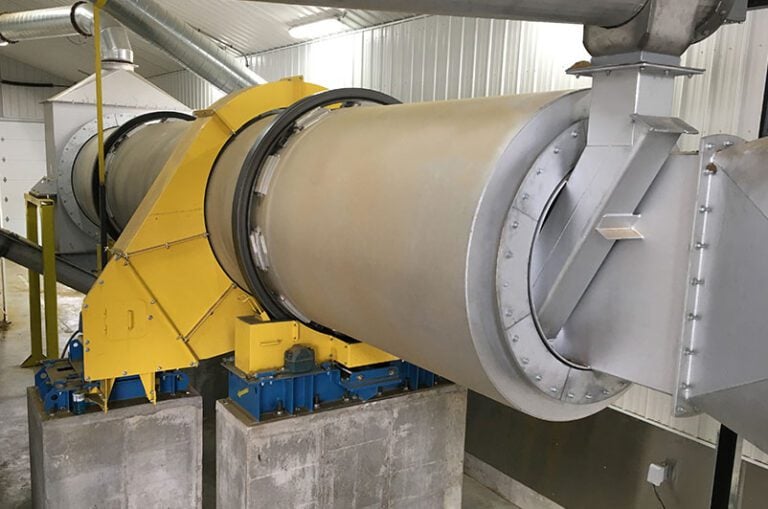A rotary drum is the backbone of many types of rotary equipment, including dryers, coolers, kilns, and granulators.
While the type of rotary equipment will dictate a number of key features of the unit, the rotary drum itself consists of several standard components that allow for customization based on the specified application.
What follows is an introductory look at fundamental rotary drum components and their function, as well as opportunities for customization.
Basic Rotary Drum Components
The agglomeration drum diagram below illustrates the basic standard components found on a rotary drum (Click on image to enlarge).
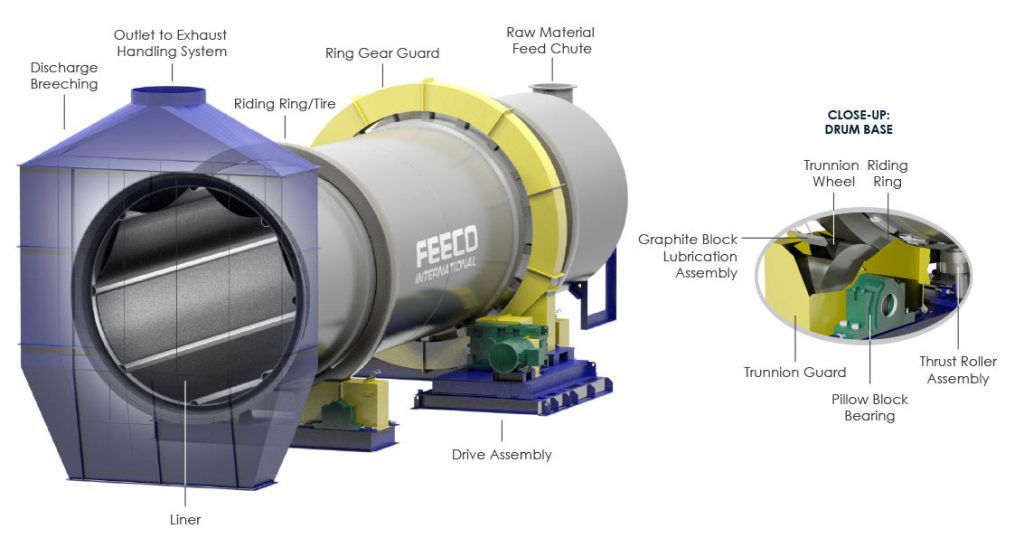
Note: While a liner is pictured and common in agglomeration drums, this element is not standard in drum applications that employ heat.
Rotary Drum Shell:
The rotary drum shell can be made from a variety of materials, including carbon steel, stainless, or special steel alloys. The shell may be customized in different ways, depending on the needs of the material and the process, including the material it is made from, how thick the shell is, and how or if it is lined.

Rotary drum shell
Raw Material Feed Chute:
The raw material feed chute is where the raw material is fed into the system (this is typically either a chute or feed screw). The raw material inlet of a rotary drum requires careful design to promote moving material into the processing zone while also preventing plugging or back spill.

Raw material feed chute (on top of inlet breeching)
Drum Seal
A seal is used to close off the opening where the rotating drum meets the stationary breechings. Many different seal options exist, again, depending on the needs of the material being processed and the tolerance for potential air leakage.
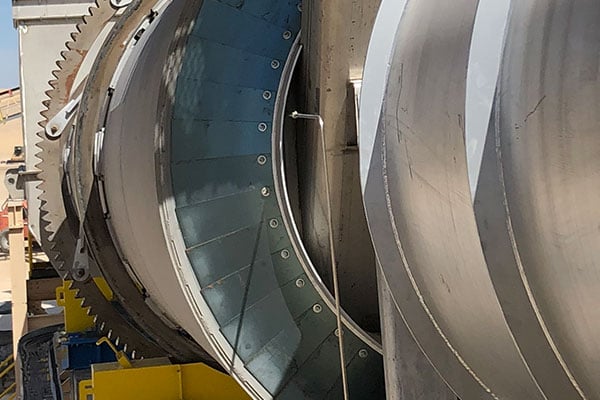
Drive Assembly
The drive assembly facilitates rotation of the drum and is available in a number of different styles, including the chain & sprocket, gear & pinion, friction drive, and direct drive. The choice between these different styles is based on the level of duty required.
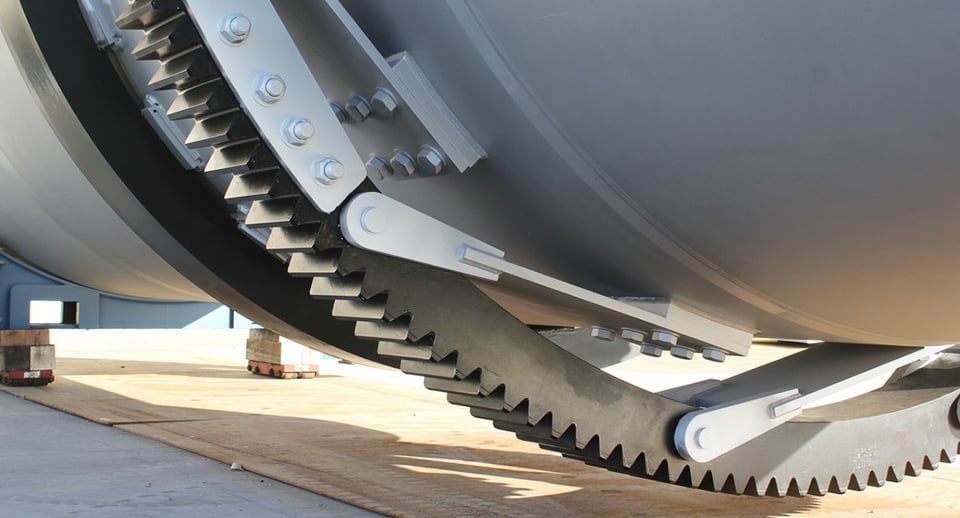
Rotary drum gear
Trunnion Wheels (Support Rollers)
The trunnion wheels support the weight of the drum and provide a place on which the riding rings (tires) rest. Trunnion wheels also serve as a wear point, as they are less costly to replace than the riding ring/tire. Trunnion wheels are customized to suit their level of duty based on loading, with options in diameter, face width, material of construction, and hardness.
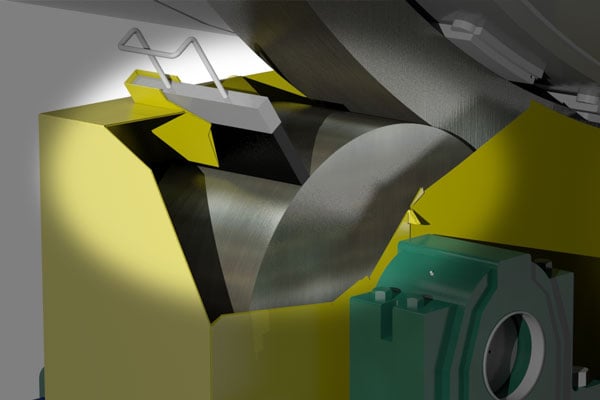
Trunnion wheel under guard with graphite block lubrication
Tire (Riding Ring)
The tire, or riding ring, provides structural support for the drum and a place for pressure to be absorbed. As with trunnion wheels, tires can be provided in several different sizes, with specifications for interior diameter, outer diameter, and face width, as well as material of construction.

Rotary Drum Tire
Thrust Rollers
Also known as thrust idlers, thrust rollers are positioned along both sides of each tire in order to prevent the drum from drifting longitudinally. These essential base components are available in a number of sizes and materials of construction.
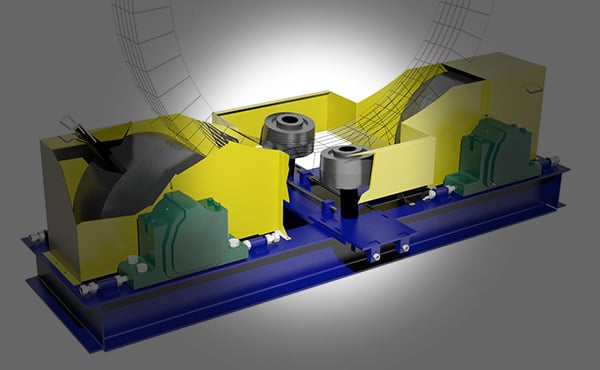
Thrust rollers (at center) shown on wireframe tire
Graphite Block Lubrication Assembly
The graphite block lubrication assembly is used to keep trunnion wheels and tires lubricated (see trunnion wheel 3D image above). Proper lubrication is essential to prolonging their service life and minimizing wear and potential damage. The graphite block lubrication system provides automatic lubrication at all times, provided the graphite block is replaced as needed. It is important to note that not all rotary drum manufacturers utilize this type of lubrication technology.
Inlet Breeching
The inlet breeching is the interface/transition between the incoming raw material, hot gasses (dryer/kiln), and cool air (cooler) with the rotary drum shell.
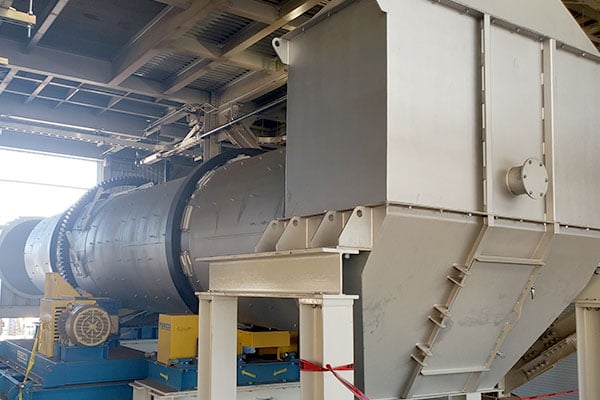
Inlet breeching with access door
Discharge Breeching
The discharge breeching is where product exits the system and exhaust gasses or air is guided through an outlet to the exhaust gas handling system; material drops into the discharge chute, while exhaust gas exits the unit through the outlet port.
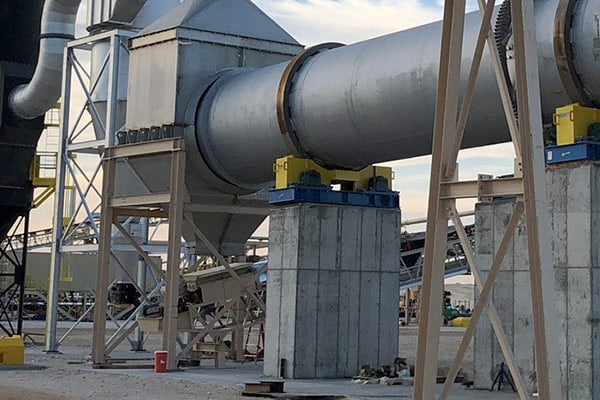
Discharge breeching on a rotary dryer feeding an offtake conveyor
Guarding (various pictured)
As with any mechanical equipment, guarding protects employees from pinch points and moving parts. Guarding is standard around trunnion wheels and drive assembly components.
Internal Lifters and Flights
Rotary dryers and coolers utilize different types of lifters/flights to increase process efficiency.
Advancing flights help to carry material away from the inlet, while lifting flights, sometimes also called lifters, shower material through the air stream to increase heat transfer between the material and processing medium.
Some agglomeration drums have agitation flights to promote agglomeration.
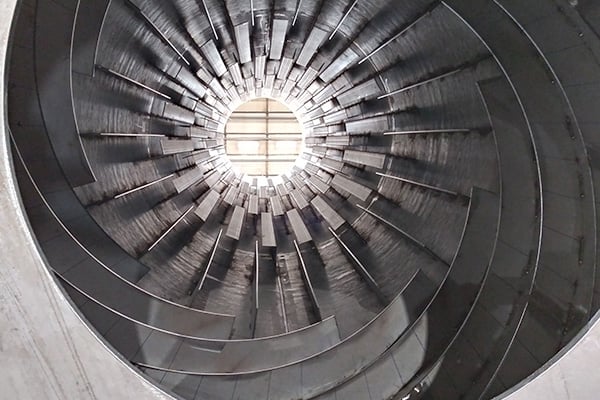
Rotary dryer flights (both advancing and lifting flights can be seen)
Combustion Chamber (Rotary Dryers & Kilns Only):
A combustion chamber is often used with dryers and kilns to house the combustion reaction from the burner and keep the burner flame away from the material being processed. The use of a combustion chamber also promotes more uniform heating.
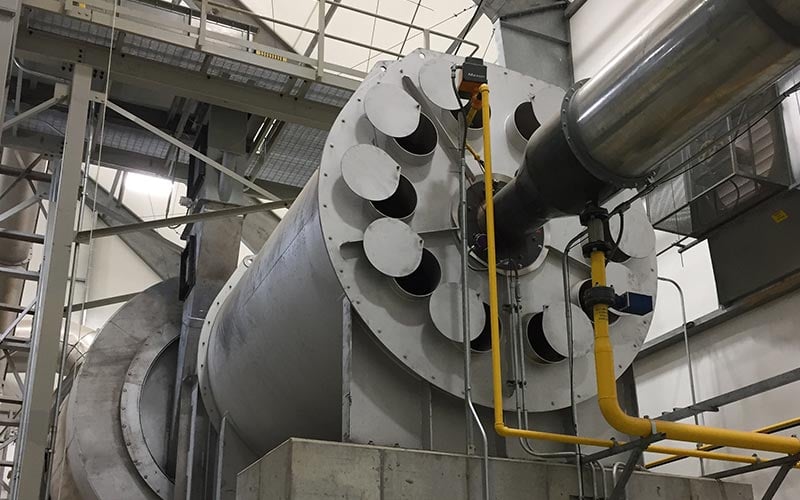
Rotary Dryer Combustion Chamber
Conclusion
While the rotary drum application will dictate specific features, rotary drums are based on a standardized build. The potential to customize each component is high, but configuration requires expertise to design a unit tailored for optimal performance and longevity in its specified application.
Backed by a process development facility, extensive parts and service support, and more than 70 years of experience, FEECO rotary drums have earned the well-deserved reputation as the industry’s best, with each drum engineered according to the unique specifications of the job at hand. For more information on our rotary drums, contact us today!



